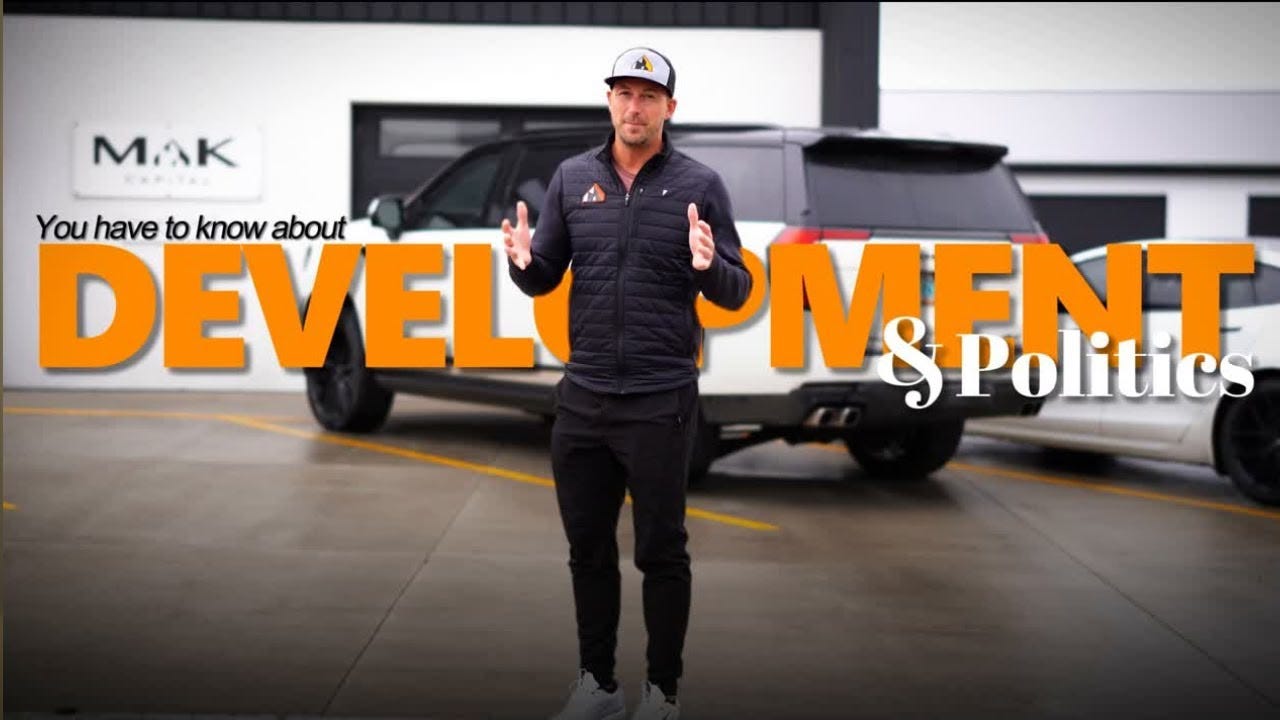The Deal-Killer No One Talks About
What 15 years as a construction CEO and 8 years as a real estate developer taught me about politics, permits, and getting real estate projects across the finish line.
Welcome to Unfollow the Herd, the weekly newsletter for people who want to stop trading time for money—and start building wealth through ownership.
If you’re new here, join 5,500+ others getting insights from the front lines of development, construction, and real estate investing.
I’ve spent the past 15 years building a construction company and the past 8 as a luxury storage and multifamily developer in the Midwest.
Most people think real estate development is about:
→ Blueprints
→ Budgets
→ Contractors
On a recent multifamily development, I learned what really makes or breaks a project:
Politics.
Not national politics. Local.
Small rural North Dakota towns and the like. The kind of local politics that shows up at city council meetings, zoning hearings, and neighborhood review boards.
Here’s how we’ve learned to approach building relationships in the communities we build in and why this essential if you want to be in the real estate development game.
My First Wake-Up Call
My first ground-up development was a set of townhomes in a high-density area. Everything lined up:
→ Zoning was right
→ Location was solid
→ Pro forma penciled
I thought it would be a layup.
Then I submitted for permits.
The pushback was immediate—neighbors, council members, even planning staff. What should’ve been a rubber stamp turned into 5+ months of hearings, delays, and headaches.
Turns out: zoning on paper doesn’t mean you’re good to go.
What changed the outcome? Getting the council on-site. Showing them the impact. Having real conversations.
Once they saw the value we were bringing, they supported the rezoning. But it took work.
See a real life example of how this plays out for a real estate developer in my latest YouTube video 👇 breaking down what you need to know about development and politics.
The Rural Multifamily Deal That Shouldn’t Have Worked
A few years later, we built a 70-unit multifamily project in a rural market. And the math just didn’t add up:
→ Build cost: $15.6M
→ Appraised value: $10M
No private lender would touch that without major help.
So we got creative:
→ State subsidies
→ City tax abatements
→ Donated land and building materials
→ Cash grants from local government
That kind of alignment doesn’t happen by accident. It happens because we had early buy-in from the city.
They wanted the housing. We had the plan. And they helped close the gap.
What Most Developers Miss
The biggest mistake I see new developers make? They treat permitting like a paperwork issue.
It’s not. It’s a people issue.
Here’s what I wish someone told me 10 years ago:
Start with the city, not the site.
Get face time with the mayor, council, and planning team.
Make your project solve their problem.
If the local government isn’t behind your deal, the odds are stacked against you.
How We Think About Development x Politics at MAK Capital
Every time we look at a new market, we ask one question first:
Does this town really want growth?
Or do they just say they do?
If the answer is yes—we get to work.
If it’s no—we walk.
Because in real estate, the numbers don’t matter if the politics aren’t aligned.
Final Thought
You don’t need to love politics. I sure don’t. I don’t even watch the news.
But if you’re serious about building things that last, you better respect the game—and learn how to play it.
Or partner with someone who does.
That’s all for today. Get back to enjoying your holiday weekend. 🇺🇸
Marc Kuhn
P.S. If you’re a developer, investor, or construction entrepreneur who wants to collaborate on future projects, DM me on LinkedIn. We’re scaling MAK Capital and always looking for the right partners.




